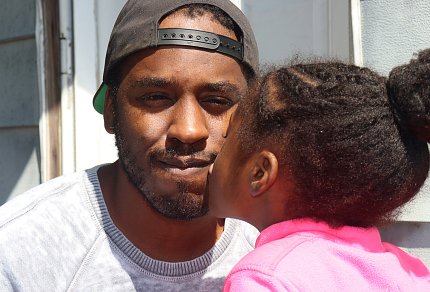HEALing Communities
Disparities in Opioid Overdose Deaths Continue to Worsen

Photo: 5d media/Shutterstock
The opioid overdose death rate was significantly higher for non-Hispanic Black individuals in four U.S. states from 2018 to 2019, while the rates for other race and ethnicity groups held steady or decreased. These findings appeared in a new NIH study, published in the American Journal of Public Health.
This alarming data is in line with other research documenting a widening of disparities in overdose deaths in Black communities in recent years, largely driven by heroin and illicit fentanyl. The research emphasizes the need for equitable, data-driven, community-based interventions that address these disparities.
The research was conducted as part of the HEALing Communities Study, which aims to significantly reduce opioid-related overdose deaths by helping communities implement evidence-based practices to treat opioid use disorder and reduce other harms associated with opioid use in New York, Massachusetts, Kentucky and Ohio. It’s the largest addiction implementation study ever conducted and is administered in partnership by NIDA and HHS’s SAMHSA through the Helping to End Addiction Long-term Initiative, or NIH HEAL Initiative.
For this study, researchers collected death certificates for 2018 and 2019 across 67 communities with a total population of more than 8.3 million people in the 4 states participating in the HEALing Communities Study. The researchers calculated rates and trends of opioid overdose deaths overall and for each state, and then further analyzed trends by race and ethnicity.
Overall, no change was observed in the opioid overdose death rate in these states from 2018-2019 but researchers found a staggering 38 percent increase in the opioid overdose death rate for non-Hispanic Black individuals.
Trends varied at the state level. Among non-Hispanic Black individuals, increases were highest in Kentucky (a 46 percent increase) and Ohio (a 45 percent increase). No significant increase was observed in Massachusetts. In New York, the rate was unchanged for non-Hispanic Black individuals and, in fact, there was an 18 percent decline among non-Hispanic White individuals, suggesting that non-Hispanic Black individuals have not benefited equally from prevention and treatment efforts.
The study authors note these increasing disparities in opioid use deaths highlight the importance of access to timely, local data to inform effective community-tailored strategies to reduce these deaths. Numerous evidence-based prevention and treatment interventions exist for addressing the opioid overdose crisis: overdose education, naloxone distribution, medications for opioid use disorder, behavioral therapies and recovery support services. Unfortunately, these interventions have largely failed to gain widespread implementation in community settings including addiction treatment, general medical care, social support services, schools and the justice system.
To address this challenge, the HEALing Communities Study is working with local, state, and federal partners to gain access to data on opioid-related overdose fatalities, treatment, other related health concerns and demographic data in a timelier fashion.
“We must explicitly examine and address how structural racism affects health and leads to drug use and overdose deaths,” said NIDA director Dr. Nora Volkow. “Systemic racism fuels the opioid crisis, just as it contributes mightily to other areas of health disparities and inequity, especially for Black people. We must ensure that evidence-based interventions, tailored to communities, are able to cut through the economic and social factors that drive disparities in substance use and addiction, to reach all people in need of services.”
